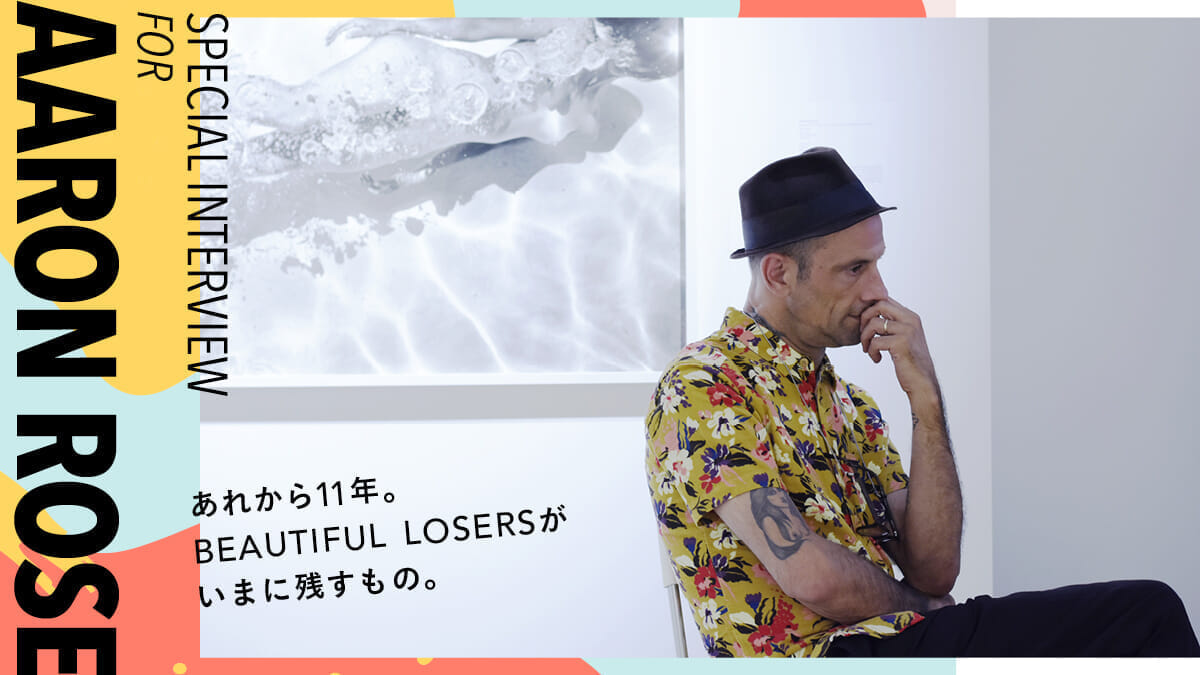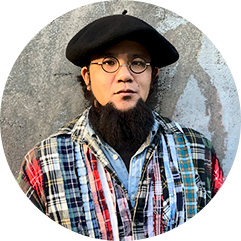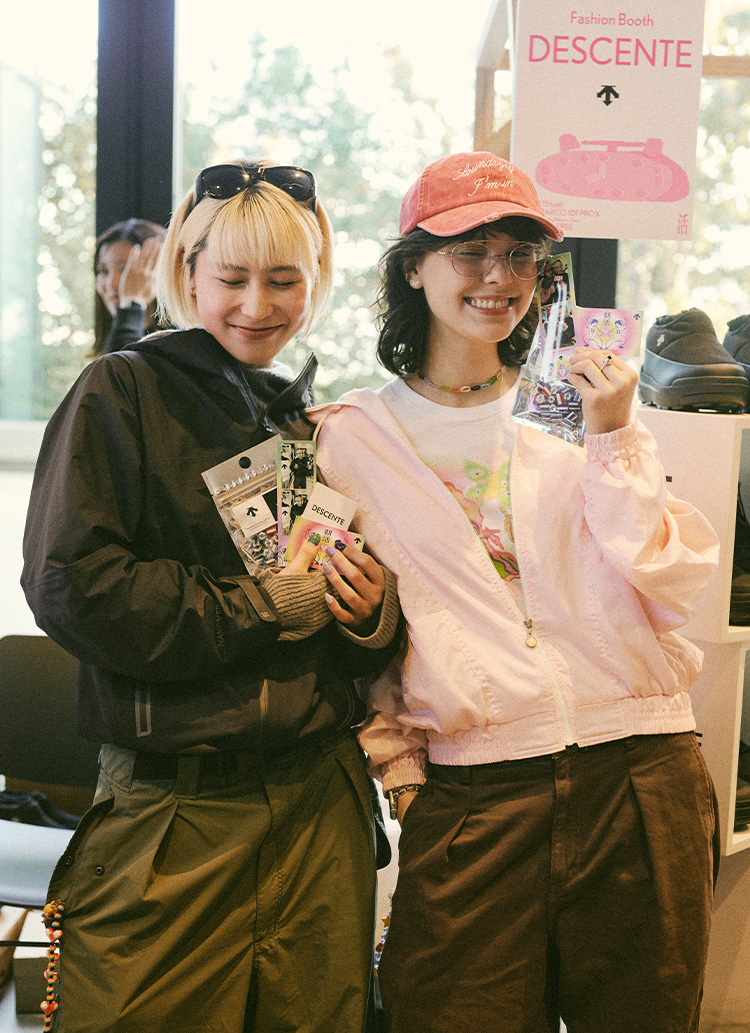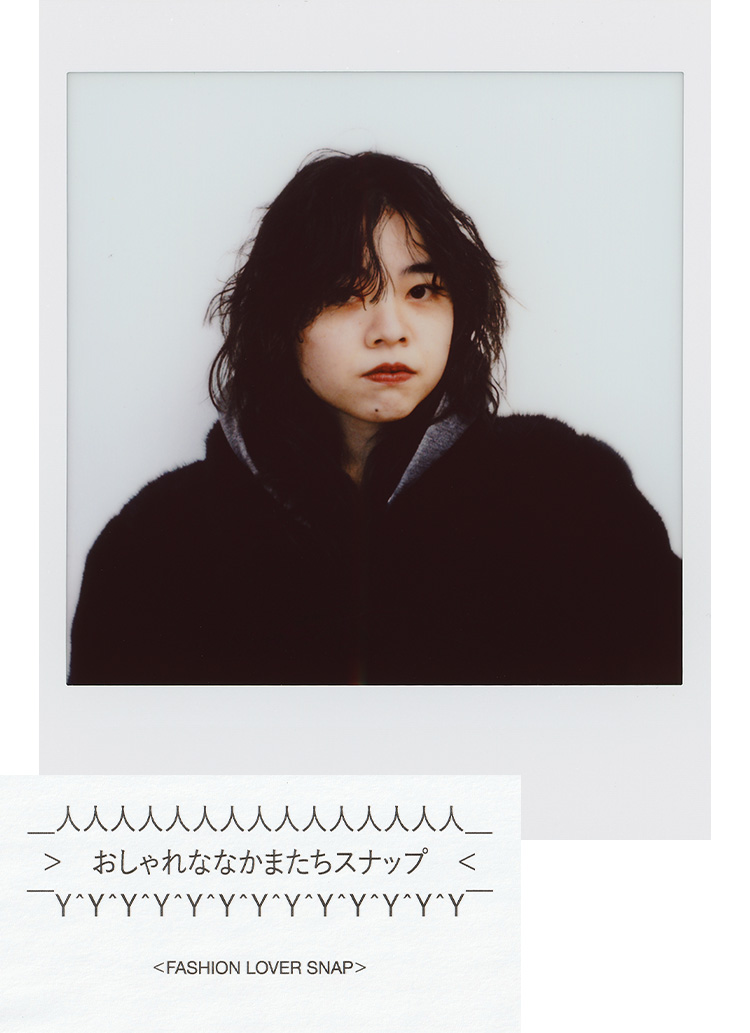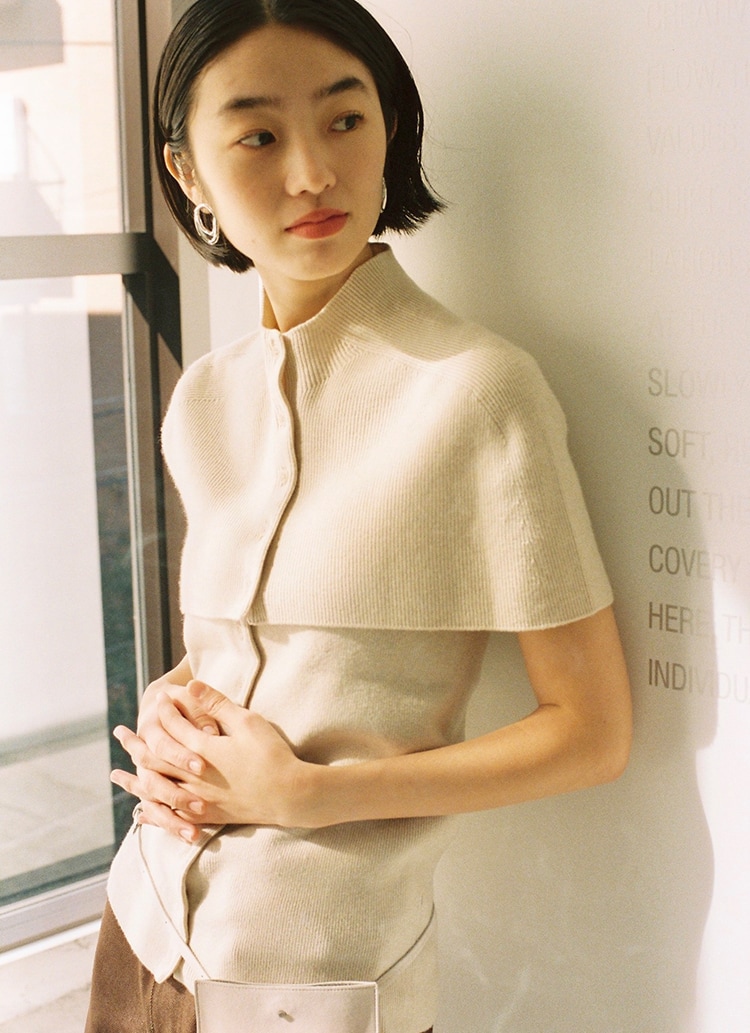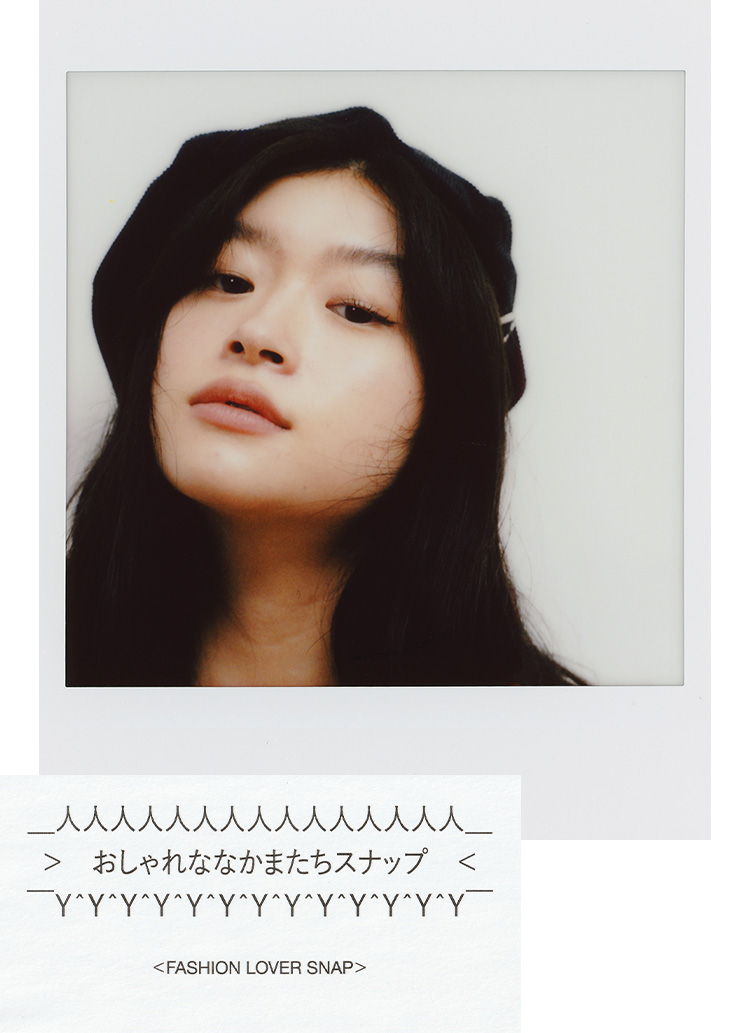What do you want to convey through that work? That's all.

In addition to the "Beautiful Loosers" retrospective, you also held an exhibition in Japan in 2000 under the name "Untitled. The co-curator at that time was the late Fumihiro Hayashi, founder of "DUNE. What kind of a person was he to Aaron?
- Fumihiro Hayashi from Dune magazine was the curator.
Ah, Charlie Brown (*Fumihiro Hayashi's nickname) (laughs). Of course I know him well. He was one of the few like-minded close friends I had. He was always behind the scenes, supporting new talents who were not yet ready to take off on the streets. He was also the editor-in-chief of DUNE magazine in Japan, and I don't think any other magazine, then or now, understood the relationship between fashion and photography as well as he did, and covered grafitture, which was never in the limelight.
He's one of my friends that have the same goals. He's one of my friends that have the same goals. He supports everyone, but behind the scenes. There wasn't any magazines like that back in the day that supported graffiti.
And likewise, you have a deep relationship with Mr. Kunichi Nomura, who also co-hosted the talk show at this event. What kind of encounter or relationship did you have with him that made this kind of initiative possible?
- There was a talk at the exhibition with a guest called Kunichi Nomura.
In 2008, we held a traveling exhibition of "Beautiful Loosers" at Laforet in Harajuku, and that is when I first met Kunichi Nomura (*Kunichi Nomura's nickname). Kun worked as a producer and curator in Tokyo at that time, and also served as an attendant for us. We met and talked for a while, and we had a lot of mutual friends, so we hit it off right away. He is very clever and has a very similar sensibility to me.
I met Kun in 2008 at the Beautiful Losers exhibition. He did a creation and was a general producer. We have so many mutual friends and tastes so we became friends. He's clever and has the same taste as me.
Can you tell us about the creation of the Artist Network Program, the successor to the Arranged Gallery, with the support of RVCA, and the genesis of the program, as well as the relationship between RVCA and Aaron? I wonder if you can tell us about the relationship between Luca and Aaron.
- Artist Network program is supported by RVCA.
When Arranged Gallery closed and I returned to Los Angeles, Pat Tenor, the founder of Luca, asked me to start an art magazine called ANP Quarterly. I've been doing it for 12 years with former colleagues Ed Templeton and Brendan Fowler. We also did a memorial project for Charlie in "DUNE" and introduced various artists. We've never had a single correction from Luca about the content. This proves that they have faith in us and the concept of "artists first.
I met RVCA's founder and they asked me to make the art magazine called ANP Quarterly. I also made an RIP issue for Charlie. They never tell me what to do, but have been very supportive.


It's an ideal relationship. Eleven years have passed since "Beautiful Loosers" and you have been involved in a variety of activities.
- 11 years passed since Beautiful Losers. what's next for you?
I am currently working on a film for a company called "Director's Bureau," which includes Sofia Coppola, Mike Mills, and Wes Anderson. I guess you could say that is the mainstay of my current creations.
I'm in a production called Directors Bureau. I'm making films with Sophia Coppola, Mike Mills, and Wes Anderson.
I feel that many people are still influenced by "Beautiful Loosers" because there is still no street art movement that surpasses it. Will this phenomenon continue to be updated along with Aaron's intentions? Or is there a different outlook?
- There's no such a big movement after BEAUTIFUL LOSERS . Beautiful Losers is still huge now. How long do you think it will last?
Nowadays, with the development of social networking sites such as Instagram, I think it is difficult to make mistakes. In such a world, a movement like the one at that time will never happen. If it does happen, it may be in a world far away from the Internet, in some remote island country, and we may find a culture and community that is unique to that place. Or, if there are young people with newer ideas and unique originality, I would like to see them pull me out of that concept.
I think the next big movement will come from a small island with no internet. because they have a strong culture and community. I'm looking for them now.

You are looking forward to nurturing young talents, not only those in the "Beautiful Loosers" group.
- So you're excited about young people who have talent?
Of course, I am always looking for young talent. I am always the oldest person in the nightclub (laughs). (Laughs.) Also, in high school art classes in the U.S., the DVD of "Beautiful Loosers" is now used as a teaching material. It's a blessing to know that today's youth are watching and learning from a documentary film about our activities back then.
In art classes in high school they play Beautiful Losers during class. I'm honored.
I didn't know that. That's a nice story. Finally, what exactly does art mean to Aaron? Can you tell us the answer to this question by looking back on your life so far, and also by giving a message to the many fans who think about the street art scene that Aaron loved so much?
- For the last question, what does art mean to you?
If there are youth who want to express something in the future, and if they want to become artists, they need to have a firm sense of mission. Movies and music can be born from sampling, but street art such as painting and graffiti are not. What do you want to convey through your work? That's all there is to it. That's also the answer to the question of what art means to me, isn't it? (Laughs)
If you want to make art to explain something you need strong responsibilities. Think about what story you want to tell with the art. answer!


